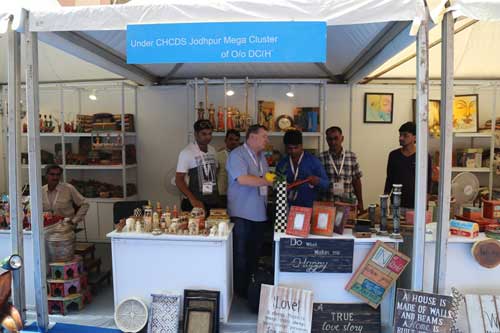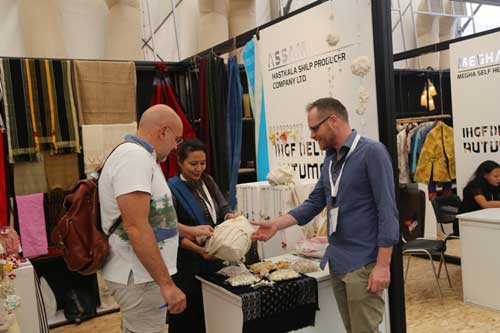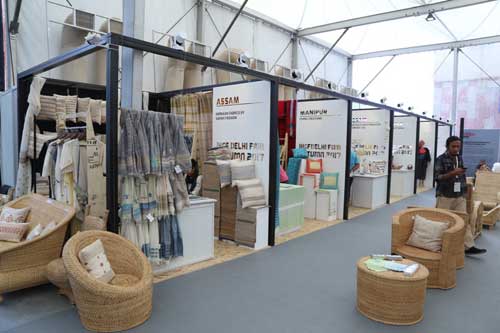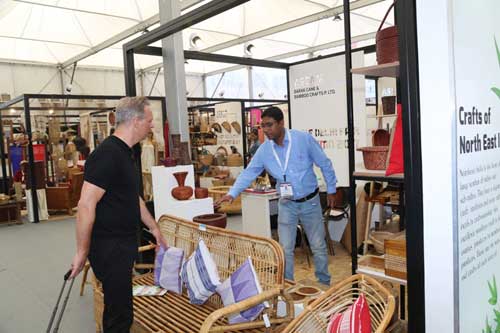FW
Chinese consumers are reshaping the luxury business. Traditional ways of developing the luxury business are no longer effective. Chinese luxury consumers, who have increasingly become the core of the market over the past 15 years, have drastically influenced the retail industry.
First and foremost, the strategy of fast retail network expansion is no longer functional for luxury brands globally. The growth paradigm based on space no longer works. The industry as a whole is now facing a significantly lower retail space growth opportunity.
In fact, China has led the wave of luxury store closings around the world over the past several years. Over-expansion by brands in China is one reason. Another is that Chinese consumers are purchasing goods on e-commerce. Turning a blind eye to this trend can be counter-productive. China’s middle-class luxury shoppers are highly budget-wise and price-sensitive.
The constant thirst for new products and designs that is demanded by Chinese luxury shoppers has accelerated the innovation cycle of luxury brands. Innovation is an imperative for luxury brands if they hope to stay in line and up to par with Chinese consumers’ evolving tastes. Newness and affordability are crucial. New products and new ideas are indispensable to make consumers part with their money.
The Brihanmumbai Municipal Corporation (BMC) has proposed draft amendment to the existing Development Control Regulations rules pertaining to the development and redevelopment of open land and built-up area of sick and/or closed cotton textile mills. The revised draft rules envisage land up to and inclusive of five hectares, wherein 33 per cent is to be earmarked for open space, 27 per cent for public housing, and 40 per cent for residential or commercial use.
Previously the entire land was to be divided one-third each for open space, for public housing, and for residential and commercial use. For areas between five hectares and 10 hectares, BMC has proposed 33 per cent for open space, 34 per cent for public housing, and 33 per cent for residential or commercial use. For land more than 10 hectares, 33 per cent will be for open space, 37 per cent for public housing and 30 per cent for residential or commercial use.
The owner of the land will be entitled to floor space index (FSI) up to 2 as per the draft regulations 30(A) (1) and (4), excluding area of the notional plot of residential buildings, chawls located on the lands of cotton textile mills, if any.
Amazon is tapping some of the biggest athletic apparel suppliers to foray into private label sportswear. The project is new and long-term contracts haven’t been signed yet. Manufacturers are producing small amounts of products for Amazon as part of a trial.
Amazon previously ventured into private label fashion, offering office clothing, jackets and dresses under names like Goodthreads and Paris Sunday. But pushing into active wear would bring fresh competition to some of the world’s biggest athletic brands.
Amazon also has been hiring staff with know-how in private-label athletic apparel. Amazon has developed its own brands in part because they fill gaps in its inventory. If customers are searching for a certain type of shoe or skirt, and don’t see much of a selection from established brands, Amazon wants to be able to offer its own options.
This also sends a message to brands reluctant to sell their full inventory on Amazon. If shoppers can’t find a brand’s products on the site, Amazon will make its own substitutes and become a competitor. The move may be unwelcome for active wear companies already struggling to stand out in a sea of competition and discounts. Online apparel sales accounted for 19 per cent of all apparel sales in 2016, up from 11 per cent in 2011.
As a large number of exhibitors display their home, lifestyle, fashion, textiles and furniture products at IHGF-Delhi Fair, EPCH organises seminar on trends and forecasts during each edition of the show by inviting international designers and experts.

This is to enable exhibitors keep abreast and prepare their collections for the future as per trends prevalent in the world market.
One of the objectives of EPCH is to create awareness through seminars and workshops on export marketing, procedures and documentation, packaging, quality compliances, service tax, foreign trade policy, design development and awareness about trends and forecasts prevalent in the world market.

During the 44th edition of IHGF-Delhi a seminar on trends and forecasts for spring/summer 2019 was organised in which PJ Arnador, Filipino international designer, and Erika Mierow, Trendcoach, Germany, apprised participants about trends for the coming season about key colors, moods of the consumers, relevant materials, dominant patterns and significant images for 2019. Such sessions help the handicrafts exporting community tap foreign investment for scaling up production of handicrafts, sourcing raw materials, designing and crafting etc. to increase the global market share for their products.

India is regarded as one of the fastest growing economies of the world, ranked among the ten top attractive destinations for inbound investment. The handicraft sector is the largest employment providing sector in India after agriculture.
India’s north east is known for eco-friendly crafts. Assam, Nagaland, Arunachal Pradesh, Manipur, Meghalaya, Mizoram, Sikkim and Tripura are known for abundant natural materials such as cane, bamboo, timber, silk, clay, natural fiber, etc. The region’s skills are unique and well-guarded through generations.

The large number of tribes and sub-tribes bring into this region’s export basket natural and handmade products from about 450 different communities. They incorporate the use of modern sustainable technologies to enhance quality.

EPCH’s export promotion programs provide a platform to the artisans, crafts persons and manufacturers of north eastern State through fairs and trade shows.

About 20 exporters, entrepreneurs and crafts persons from the region are displaying in the special theme pavilion the complete range of handicrafts of the region such as water hysin, muga silk and eri silk, apart from products made of cane and bamboo.

Another theme pavilion from Jodhpur mega cluster has also been set up in which ten artisans are displaying their skills of leather embroidery, horn, tie and dye crafts, embroidery and appliqué hand block printing, punja durries, art metal ware and woodcraft.

This participation will definitely boost the morale of the small and upcoming entrepreneurs of these regions and motivate others to step up their efforts in product design and innovation, so that they can also get connected to the international buying community.
"Sportswear market has been attracting a lot of clout of late and now women are becoming their biggest growth drivers. A study by Allied Market Research found the sportswear category will grow at a CAGR of 4.3 per cent to reach a total market worth of $184.6 billion by 2020. And though the men’s sportswear segment make up around 52 per cent of the revenue and is the highest revenue-generating segment in sports apparel market, every brand has realised the potential of women’s segment that is expected to grow at a relatively higher CAGR of 5.7 per cent during the forecast period. "

Sportswear market has been attracting a lot of clout of late and now women are becoming their biggest growth drivers. A study by Allied Market Research found the sportswear category will grow at a CAGR of 4.3 per cent to reach a total market worth of $184.6 billion by 2020. And though the men’s sportswear segment make up around 52 per cent of the revenue and is the highest revenue-generating segment in sports apparel market, every brand has realised the potential of women’s segment that is expected to grow at a relatively higher CAGR of 5.7 per cent during the forecast period. This is because of the increased involvement of women in sporting and fitness activities across the globe. Owing to this, sportswear brands are launching ‘women’ specific lines into their portfolio. For instance, Nike and JD Sports have opened up stores that are all-woman because of the trending size of women sportswear market. Significantly, the sport industry is encouraging collaborations between sports brands and fashion industry in order to produce new styles to cover the needs of the young and women segment that are significantly growing over the past years.
Campaigns focussed on women audience

Nike recently launched #BetterForIt campaign to attract women audience, and the efforts have paid off. Going by the success, it launched a web-series called ‘Margo vs. Lily’. Under Armour, too has been aggressively pushing this agenda by taking on board stars like Gisele Bundchen and Misty Copeland. Their catchphrase ‘I will what I want’ has created quite a buzz in the market. According to consulting firm Conlumino, Under Armour’s business approximately splits at about $1.14 billion for women and $2.69 billion for men.
In 2016, Puma introduced cross-category collections by merging sports and fashion. Its ‘Do You’ campaign inspires confidence in women around the world, collaborating with a number of famous female brand ambassadors such as Rihanna, Kylie Jenner, Cara Delevingne and the New York City Ballet has helped to tell a powerful story. Recently Adidas has also hired a new team to overlook the new direction with the dictate, ‘Bring the active woman to the store’. The company has brought onboard Christine Day, former CEO of Lululemon, to advise the brand. Taking the initiative one notch up, it has launched a subscription box specifically for women called Avenue A, which contains a selection of seasonal training gear for women, curated by what Adidas is calling ‘fashion-forward trendsetters and trainers’. With such initiatives, it’s sure to be raining options for women in sportwear.
Bangladesh has some 4,500 readymade garment factories and nearly all of these will be shortly compliant. By next June the process is expected to be complete. Before the Rana Plaza tragedy garment factories focused only on child labor, limiting working hours, wages for overtime duties and on achieving technical compliance like fire extinguishers, gloves, boots, helmets for workers.
However, after the disaster, stakeholders went ahead with structural, fire and electrical safety, which was almost zero in their vision earlier. Factories now use proper electrical cables. Safety standards in the industry as well as the well being of workers are being monitored.
Now factories are inspected jointly by experts supported by ILO and the buyers’ platforms Accord and Alliance. Bangladesh now has 67 LEED (Leadership in Energy and Environmental Design) factories, certified by the United States Green Building Council, of which 13 are platinum. Seven out of world’s top 13 LEED certified factories are in Bangladesh and 280 more are in the pipeline for getting certification.
Meanwhile the labor law was amended in July 2013 and another revision of the law is in progress. A workers’ welfare fund has been created to which the garment industry alone contributed around 10 million dollars last fiscal year.
Cotton farmers in Telangana are demanding a price of Rs 7,000 a quintal. They feel the MSP of Rs 4,320 for the year is not remunerative. They also want the Cotton Corporation of India (CCI) to open more procurement centers.
A large number of farmers switched to cotton this time as prices of paddy, turmeric, mirchi and red gram fell sharply last year. If farmers get a price lower than that, they expect to be compensated for the difference. The state sowed a record acreage of 46 lakh acres for the fiber crop this year. After witnessing dismal returns in crops such as chillies, turmeric and red gram, farmers returned to cotton in a big way. As against the suggested price of Rs 4,000, a significant number of farmers got Rs 5,000, resulting in an additional acreage of over 10 lakh acres this time.
Though procurement generally takes off after Diwali, some markets have already recorded arrivals of the commodity. The prices being offered are not very encouraging. Farmers in Telangana reduced the cotton acreage in the previous year and went for red gram, whose acreage went up to 11 lakh acres from the normal area of six lakh acres.
In the second quarter global yarn production rose by 11 per cent. The drivers of the growth are: Asia and Brazil. Yarn production decreased by ten percent in the US and 18 per cent in Africa. Global fabric production improved by nine per cent, with the most significant increases in Brazil, Asia, and Africa.
Global yarn stocks decreased by one per cent. Asia, Europe, and Brazil saw their yarn inventories increase, but the world average is driven down by a 12 per cent decrease of yarn stocks in Egypt. But global yarn stocks have improved compared to the same quarter a year earlier.
Global fabric inventories decreased by eight per cent. The strongest decrease is observed in Brazil. Asia and the US are fairly stable and Europe’s stocks rose by seven per cent. Global yarn orders have fallen in all regions in the second quarter. European yarn orders decreased by almost seven per cent. Reductions of six per cent and four per cent were recorded in Brazil and Asia.
Asian and European fabric orders remained stable and rose in Brazil and Africa. In comparison to the second quarter of last year, Asian and Brazilian fabric orders declined significantly while they slightly increased in Europe and Africa.
US cotton continued to be the major supplying source for spinners in Vietnam. Cotton imported from the US made up around 40 per cent of Vietnam’s total cotton imports over the past few years. Australian cotton remained the second largest supplier. Brazilian cotton took the third place. Vietnam’s cotton imports in September 2017 increased 56.09 per cent year on year and 1.55 per cent month on month.
In the first nine months of 2017, cotton imports were up 28.23 per cent from the corresponding period of last year. For September’s imports, the major supplier was the United States, with a proportion of 47.30 per cent.
From January to September 2017, cotton imports of Vietnam were up 28.23 per cent year on year. In September, cotton imports were up 56.09 per cent from a year ago. Vietnam’s cotton consumption has been increasing at an average 22 per cent year on year for the last five years.
In September 2017, textile and garment exports of Vietnam were up 9.76 per cent year on year and down 11.14 per cent month on month. In January-September 2017, export value increased 8.51 per cent from a year ago. The export value decreased somewhat in September.











